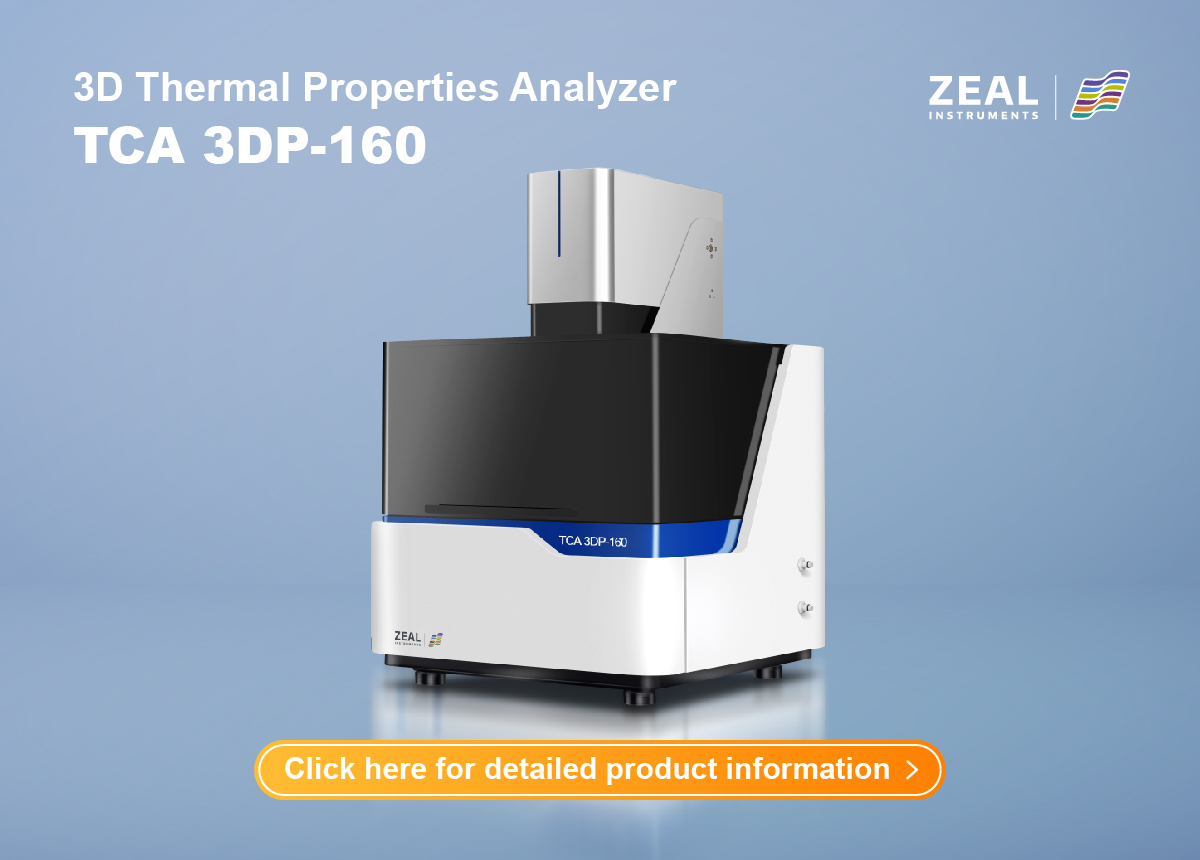Precision in Heat: Exploring the Cell Thermal Conductivity Meter
Cell Thermal Conductivity Meter is a crucial physical parameter of battery materials, significantly affecting various characteristics of lithium-ion batteries. During the use of lithium-ion batteries, different boundary conditions related to electricity, heat, mechanics, and mass are encountered. This poses serious challenges in accurately measuring the thermal conductivity of battery materials. Lithium-ion battery materials often involve energy-containing and energy-storing materials, which undergo heat generation and even thermal decomposition during charging and discharging processes. The battery’s thermal management system also includes phase change materials, necessitating the simultaneous measurement of thermal conductivity during these electrochemical and thermochemical processes. This makes it more complex than measuring thermal conductivity in purely physical thermal processes.
Challenges in Testing Thermal Conductivity
There are many methods for testing thermal conductivity, but the complex characteristics and requirements of lithium-ion battery materials demand the identification of a suitable testing method. Ensuring the accuracy of the measurement results is particularly important for the materials used in lithium-ion batteries and for their thermal management. Accurate thermal conductivity measurement helps in understanding how effectively a battery can manage and dissipate heat, which is crucial for both performance optimization and safety enhancement.
Principles, Parameters, and Advantages of the Cell Thermal Conductivity Meter
Innovative Technology and Applications
Zeal Instruments’ 3D thermal property analyzer TCA 3DP-160 utilizes cutting-edge infrared thermography combined with three-dimensional data inversion technology. This method is especially beneficial for testing materials like soft pack lithium-ion batteries and carbon fiber sheets that exhibit anisotropic thermal conductivity and complex, multi-layered structures. The ability to perform in-situ measurements, where pulse excitation is applied through flexible electric heating elements at the battery’s bottom, allows for precise and dynamic analysis of the material’s thermal properties under real operational conditions.
Operation and Measurement Process
In the operation of the analyzer, infrared thermography is utilized for non-contact temperature measurements on one side of the battery. This sophisticated technique involves capturing and analyzing the infrared radiation emitted from the battery to determine temperature variations and heat flow characteristics. The data collected is then processed through advanced inversion algorithms to calculate both longitudinal and transverse thermal conductivity. This comprehensive approach ensures detailed insights into the thermal behavior of the battery, aiding in better design and optimization.
Key Advantages and Features Cell Thermal Conductivity Meter
One of the primary advantages of this thermal conductivity meter is its ability to provide accurate and reliable measurements without the need for physical contact with the battery. This non-invasive approach not only preserves the integrity of the battery but also significantly reduces the risk of altering its thermal properties during testing. Additionally, the analyzer’s flexibility in handling different types of anisotropic materials makes it an invaluable tool in various industries, particularly in quality control and R&D departments focused on new material development and thermal management solutions.
Practical Implications and Industry Impact
The practical implications of employing such advanced thermal measurement tools are vast. For industries relying on lithium-ion batteries and similar technologies, the ability to precisely measure and manage thermal properties can lead to enhanced battery performance, longevity, and safety. This is particularly critical in sectors such as electric vehicles, aerospace, and consumer electronics, where battery efficiency and safety are paramount. Furthermore, the insights gained from these measurements can drive innovation in thermal management practices, contributing to the development of more sustainable and efficient energy storage solutions.

Specifications
Overview
The 3D thermal property analyzer is designed with robust specifications to ensure precise and reliable measurements. It covers a broad thermal conductivity range, with longitudinal measurements ranging from 0.2 W/(m-K) to 5 W/(m-K) and transverse measurements from 5 W/(m-K) to 100 W/(m-K). This range accommodates various materials, providing comprehensive thermal analysis capabilities.
Measurement Capabilities
The thermal diffusivity range of the calorimeter is equally impressive, with longitudinal values between 0.1 mm²/s and 2 mm²/s, and transverse values from 2 mm²/s to 50 mm²/s. The sample size is adaptable, accommodating transverse samples up to 400mm × 250mm and longitudinal samples ranging from 3mm to 20mm. These features ensure the device can handle a wide variety of sample types and sizes.
Performance and Accuracy
Performance is optimized with a test time of less than 10 minutes, and repeatability is maintained within 3%, ensuring consistent results. The temperature range of the device spans from 0 to 60°C, with a stability of 0.03°C and accuracy of 0.1°C. These specifications ensure that the calorimeter provides precise thermal measurements, making it a reliable tool for various industrial and research applications.
More Instrument Recommendations
Small Battery Adiabatic Calorimeter BAC-90AE
Developed from the adiabatic acceleration calorimeter, the BAC-90AE is specifically designed for small battery safety testing. It captures comprehensive safety performance data under various abuse conditions by synchronizing the collection of battery voltage, current, energy, temperature, pressure, and time data. The device simulates an ideal adiabatic environment, allowing for the direct measurement of critical thermal behavior parameters such as battery thermal runaway onset temperature, maximum rate of temperature rise, and adiabatic temperature rise. It features an integrated battery charge/discharge module, simultaneous data acquisition for thermal runaway analysis, and safety features including overpressure and overtemperature alarms.
Large Battery Adiabatic Calorimeter BAC-420AE
The BAC-420AE integrates thermal, electrical, and mechanical abuse testing methods, complemented with visible/infrared imaging, gas collection, and specific heat testing functions. This large-scale calorimeter also simulates an ideal adiabatic environment, capturing accurate thermal behavior parameters like thermal runaway initiation temperature, maximum thermal runaway rate, and adiabatic temperature rise. It includes an integrated battery charging and discharging module that enables mode switching and real-time battery capacity calculations, ensuring thorough and precise analysis under varying test conditions.
Differential Scanning Calorimeter DSC-40AE
The DSC-40AE is a standard thermal analysis instrument designed based on the tower-type heat flow method. It measures the heat flow difference per unit time between the sample and reference under programmed temperature control. This instrument’s tower-type heat flow technology enhances its resolution and sensitivity, allowing for the precise modulation of temperature and heat flow signals. It is capable of accurately measuring specific heat capacity, exothermic reactions, and other thermal properties. The DSC-40AE features ramp and isothermal temperature control modes and is equipped with a high-definition touchscreen for easy operation, making it a versatile tool for comprehensive thermal analysis.
Final Words
The examination of Zeal Instruments’ Cell Thermal Conductivity Meter using their advanced 3D thermal property analyzer underscores the critical role of precise thermal measurement. Providing detailed insights into materials such as lithium-ion batteries and carbon fiber sheets, this technology significantly enhances performance and safety. Conducting non-invasive, in-situ measurements enables more accurate thermal management, crucial for optimizing material design and ensuring the durability and dependability of battery-powered devices across diverse industries. This exploration not only showcases the meter’s capabilities but also emphasizes its substantial contribution to the progression of material science and engineering.








































